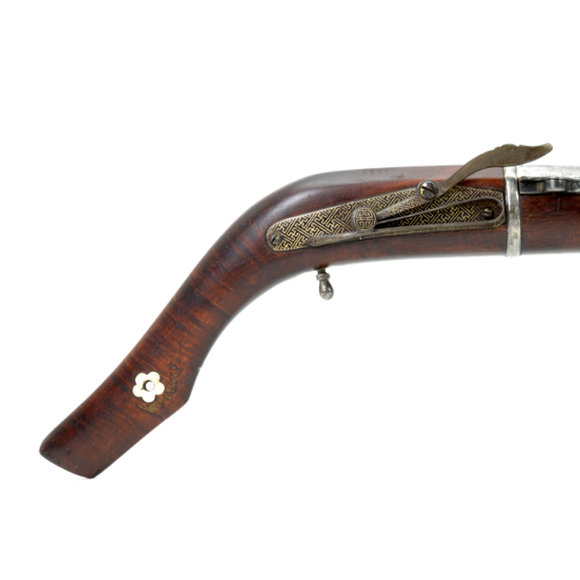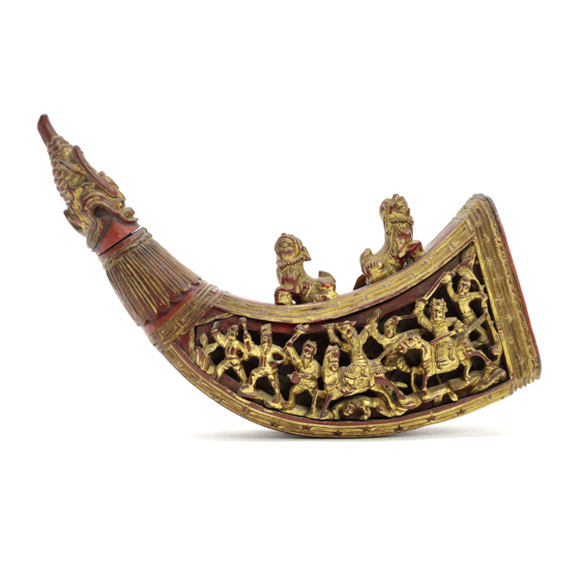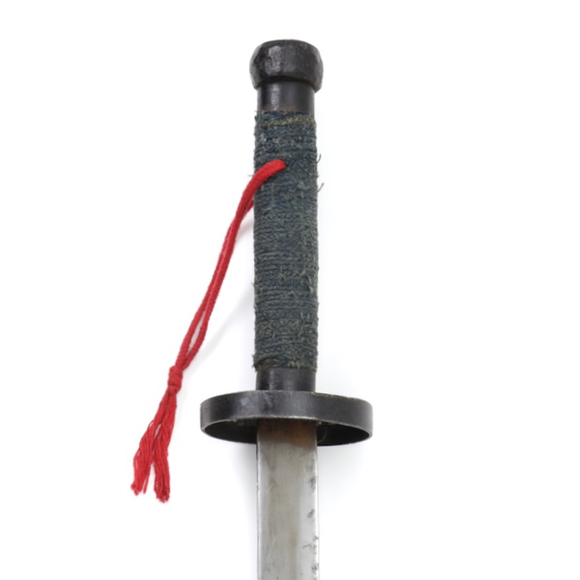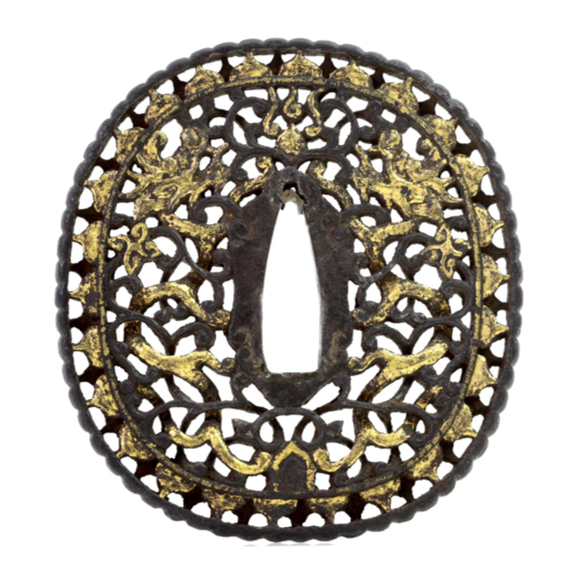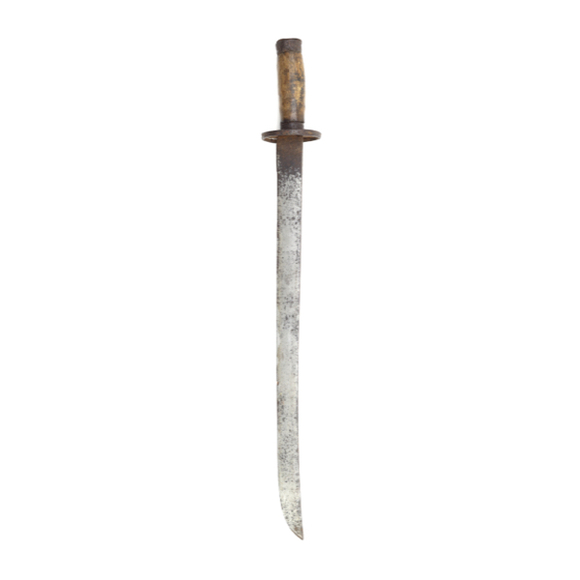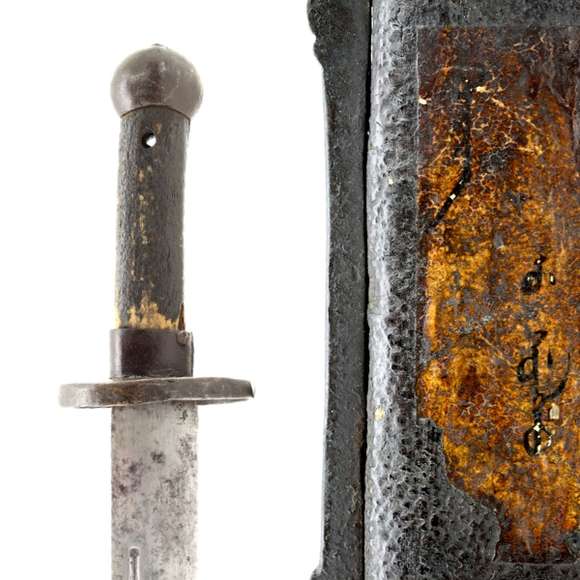With a golden damascened lock of the Indo-Portuguese type.

Sheathed 84.8 cm
Saber 81 cm
64.7 cm
Base 6 mm
Middle 3 mm
5 cm from tip 2.5 mm
Base 31.5 mm
Middle 31 mm
5 cm from tip 27.5 mm
598 grams
14.6 cm from guard
Iron, steel, wood, cotton, leather, brass, silver
Northern China
Circa 1850-1880
Description
A Qing military pèidāo (佩刀) or "waist-worn saber" of mid-19th century style. It retains all its brass pierced mounts with dragons executed more finely than is the norm on these sabers. The wooden hilt still with its original faded indigo blue cotton grip wrap.
The blade is of liǔyèdāo (柳葉刀) or "willow leaf" form with a gentle curve over its entire length. The blade profile is relatively wide with little taper in width, a northern characteristic. It has a dorsal fuller and below that a segmented fuller consisting of five segments, flanked on either side by a narrow groove.
Scabbard restoration
The scabbard was once covered with ray-skin, which was all but lost when I got it. A previous owner had covered the entire scabbard, including its mounts, with black paint. We carefully removed and cleaned all scabbard mounts, covered the scabbard with period-appropriate black leather, and put the mounts back. The hilt remains untouched, with its thick original patina on the mounts, as I wanted to leave the peening undisturbed.
Silver overlays
Very unusual for this type of saber is the lavish use of silver overlay over fine crosshatching, covering the entire length of the blade.


The designs incorporate the Big Dipper, cloud and "rolling thunder" motifs, and running dragons chasing the sacred jewel, four on each side, making an auspicious total of eight. Some details are accentuated with brass, like the seven stars, sacred jewels and the whiskers of the dragons.
At the base on both sides is an inscription in archaic seal script:

大清乾隆年制
Dà qīng Qiánlóng nián zhì
Great Qing Qianlong [period] manufacture
It is the typical format of Qing imperial reign marks, but in this case probably apocryphal because this type of saber appears to postdate the Qianlong reign by a few decades.
Comparable examples
Chinese sabers with silver overlaid blades are extremely rare. There is one in the Metropolitan Museum, New York. It is mounted in the angular style and has dragons and stylized clouds overlaid on the blade in silver.

Pèidāo with silver overlaid blade.
Metropolitan Museum, New York, accession number 14.48.1a, b.
Purchased in 1914.
One saber, much like this one, but shorter, was published by Alex Huangfu in 2007. Instead of dragon it had inlaid on the blade eight women, representing the Eight Beauties of Qinhuai. They were eight famous courtesans of the Ming-Qing transition period who were skilled in literature, poetry, fine arts, dancing, and music.1
Huangfu at the time of writing was a lot more optimistic than I am and believed that this saber was a fighting saber worn by high ranked officers of the Qianlong court. I maintain that both sabers are mid 19th century, and their markings are apocryphal.
The work is reminiscent of a group of straightswords, jiàn (劍) with silver overlaid blades and Qianlong reign marks. The work on the two sabers, however, appears far superior in execution to those jiàn which I think are about half a century later.
Notes
1. See Alex Huangfu; Iron and Steel Swords of China. (皇甫江; 中国刀剑). Jinan, Tomorrow Publishing House, 2007. Page 225.




















Probably of Southern origin, with a straight blade and flaring tip.
In the style of northern work of the 16th and 17th centuries
A standard pattern Qing military saber, but with the rare addition of a label in Manchu.

